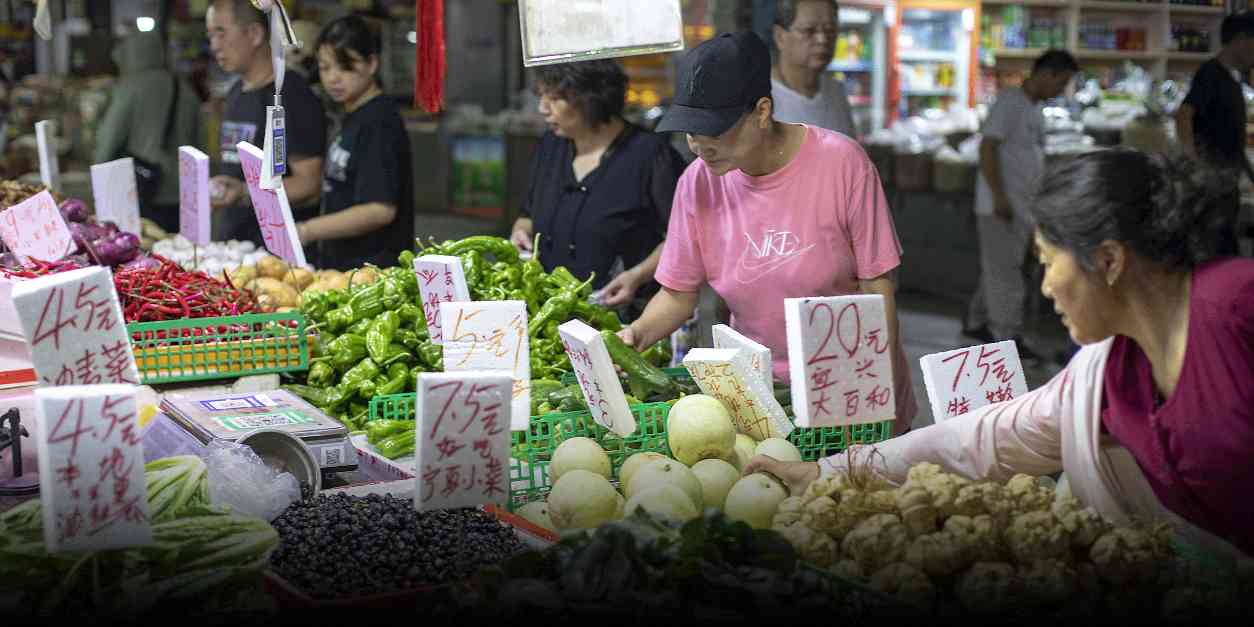Extreme Weather Impact on Food Prices in China: A Comprehensive Analysis
Vegetable prices in China have reached their highest levels in nearly a decade, following a summer of extreme weather that has severely affected the country’s agricultural regions. The Ministry of Agriculture and Rural Affairs in China reported that the average daily vegetable price surged over 40% between June 16 and August 15, from 4.27 yuan ($0.60) per kilogram to 6.01 yuan ($0.84). This sharp increase in prices has been attributed to the impact of severe natural disasters on vegetable production across the country.
Impact of Extreme Weather on Vegetable Prices
In some areas, the price hikes have been even more pronounced, with buyers in the southwestern Sichuan province facing over 50% increases in prices for vegetables such as mustard greens, cucumbers, and eggplants. The extreme fluctuations in vegetable prices this year can be attributed to a series of severe weather events that have affected key agricultural regions in China. Historic levels of rainfall have led to flash floods in regions ranging from eastern Anhui province to Sichuan province in the southwest.
According to Hu Bingchuan, a researcher at the Chinese Academy of Agricultural Sciences, the recent extreme weather conditions, including heat waves and floods, have significantly reduced vegetable production in several regions this summer. Farmers have reported devastating losses due to the floods, with one grower in Anhui mentioning that their cucumber harvest this summer was only 250 kg, compared to the usual yield of 1,000 kg. To offset their losses, farmers have resorted to doubling their prices per kilogram in an effort to mitigate the impact of the weather-related challenges.
Challenges Faced by Farmers
The extreme weather conditions have not only impacted vegetable production but have also posed challenges for agriculture in other ways. Landslides and natural disasters have damaged crucial infrastructure like roads, making it difficult for farmers to harvest and transport their crops to market. Additionally, the high temperatures have led to shorter shelf lives for vegetables in markets, further exacerbating the challenges faced by farmers in China.
Years of unpredictable weather patterns have prompted many farmers to consider alternative crops or even leave agriculture altogether. Some farmers have shifted to growing more robust crops like potatoes or focusing on more profitable products such as fruits. The aging population of farmers in China has also raised concerns about the health risks posed by working in extreme heat conditions, leading many to reconsider their agricultural practices.
Future Outlook and Government Intervention
Hu Bingchuan predicts that vegetable prices are likely to peak in the coming month before stabilizing after the National Day holiday in October. With the worst of the extreme weather conditions behind, farmers who suffered losses earlier in the season may choose to plant more vegetables once their fields have recovered. This could potentially lead to a decrease in prices as new crops enter the market in around 30 days.
While some have called for government intervention to stabilize prices, Hu believes that allowing the market to adjust itself may be a more effective approach. Subsidizing cucumber production, for example, could lead to a significant drop in prices next season, rendering the intervention ineffective and costly in the long run. Instead, offering short-term subsidies to low-income households may be a more targeted and efficient way to support those affected by the price hikes.
Long-Term Solutions for Agriculture
Looking ahead, industry experts emphasize the need for increased investment in new agricultural technology to adapt to the changing climate. Large-scale agribusinesses are better equipped to weather disasters compared to small-scale farmers, as they have more resources for risk management and advanced farming techniques. Wang Zhengjun, a manager at an agribusiness in Ningxia Hui Autonomous Region, highlights the importance of investing in resilient crop varieties that can withstand high temperatures and droughts.
Hu Bingchuan emphasizes the urgency of transitioning towards large-scale, professional, and intelligent farming practices to mitigate the impact of extreme weather events on agriculture. By reducing the reliance on manual labor and focusing on developing climate-resistant crop varieties, Chinese agriculture can become more resilient to future challenges. The consolidation of the agriculture industry is likely to accelerate as farmers adapt to the changing climate and invest in sustainable farming practices.
In conclusion, the extreme weather events in China have had a significant impact on vegetable prices, highlighting the vulnerability of the agriculture sector to natural disasters. As the country navigates the challenges posed by climate change, investments in technology, resilient crop varieties, and sustainable farming practices will be crucial in ensuring the long-term resilience of the agricultural industry in China.









![Indie music fans gather at l’Antipode for [Face B] Kool Things soirée on Saturday night news-15112024-105933](https://shanghainewstv.com/wp-content/uploads/2024/11/news-15112024-105933-218x150.jpg)







